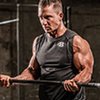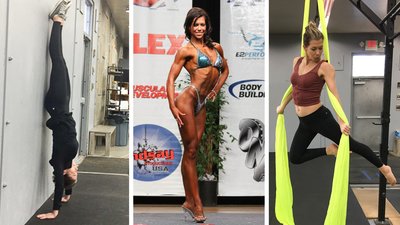Heather Eastman is not your average trainer. In the statues of Michelangelo and his Sistine Chapel frescos, she sees the possibilities of the human form, carved and lineated to perfection, the weight of the body as equaled by the weight of the soul.
There's an elegance to functionality, a quiet strength to the graceful. These are the requisites underlying Eastman's training philosophy.
Like Michelangelo, we are in service to our bodies as a way of servicing what's within. And to Eastman, strength is not just equaled by purpose—one quality simply cannot exist without the other.
Snapshot: Heather Eastman
- Age: 34
- Height: 5' 9"
- Weight: 135 lbs
- Occupation: Content Editor
- Location: Boise, Idaho
Contest Highlights:
- 2009 NPC Excalibur, Second Place
Social Links:
How did you get into personal training?
At UCLA, I wandered into a group exercise class. At the end of the class, the facilitator announced a course that would prepare students to be either a one-on-one trainer or group exercise leader. Eventually, he said, there would be a test. Everyone who passed the test would get their personal trainer certification. At the time, I thought that's how all personal trainers got their certification: by taking courses, learning things through workshops, learning how to work with clients, and learning proper body mechanics.
Looking back, I love that. It's very old-fashioned, in a good way. In reality, a lot of trainers just buy a book online, take a test online, and then get certified online. There's no oversight, and there's not a lot of passion for real learning.

I couldn't decide which training course to take—group or personal—so I took both. Instead of two nights a week in these courses, I went four nights a week. I went to normal classes during the day, then went to work, and then at night I went and did these fitness workshops.
Where did you work at the time?
I worked for Sugar Paper Los Angeles, which is a boutique letterpress stationary company. It's very beautiful, and I loved it, and I probably would have gone in that direction if I hadn't found training.
The paper direction?
The making-things-pretty direction! But I fell so in love with personal training. At the same time, my grandmother, who was sharp as a whip and had a very full social calendar, was starting to experience some physical deterioration. She lived in Los Angeles, too, and I watched her in that last 10 years of her life go from extremely active at 83 to sedentary and basically chair-bound until her death at 93.
What eventually killed her was that she got sick enough to have to spend a week in the hospital, after which she was too physically weak to get back up out of bed. One week without movement, and her body just shut down. I thought to myself, my parents are going to get older, I'm going to get older, my brothers and sisters—everyone I care about is going to get older and, gosh, wouldn't it be nice if someone could just show people how to stay strong and healthy for as long as humanly possible? It's so much easier than most people think it is. In my grandmother's case, just 20 minutes a day of strengthening her legs and strengthening her core could have prolonged her life for a few years.
So, I believe, like Rob Lowe's character in Parks and Recreation, that maybe the first person to live to be 150 years old has already been born, and I want to be that person. My great grandmother lived to be 99, so it's very possible that I'll at least live into the 100s, and I'll be damned if I'm going to do that sitting in a chair. For me, that's the whole point of being a personal trainer: to teach the practical applications to people, and to adopt them myself. You don't just live forever accidentally.
In a body-focused culture, that's almost glaringly holistic. Where do you get that from?
When I was 24, in the prime of my life, I broke my hip. As a personal trainer, I'd also been in my prime, training clients 50 hours a week, training for a bodybuilding competition on my own, and also doing CrossFit. I was working out too much, overtraining my body, and ended up on crutches for six weeks. When you're a trainer, that can be a career killer because you use your body to demonstrate. I had to figure out a way to show people how to perform without the advantage of mimicry. I had to figure out how to build trust with new clients, without the advantage of overt physicality.
On top of that, there was the mental game. I was suddenly in pain, my body wasn't working, and I was scared that I might never recover. The doctors said I might never run again. I had built a no-excuses training philosophy, but at that moment, I realized that sometimes there are legitimate reasons why someone can't work out. Suddenly, I understood all these people who were coming to me, saying, "My back hurts," "My knee hurts," "My shoulder hurts."
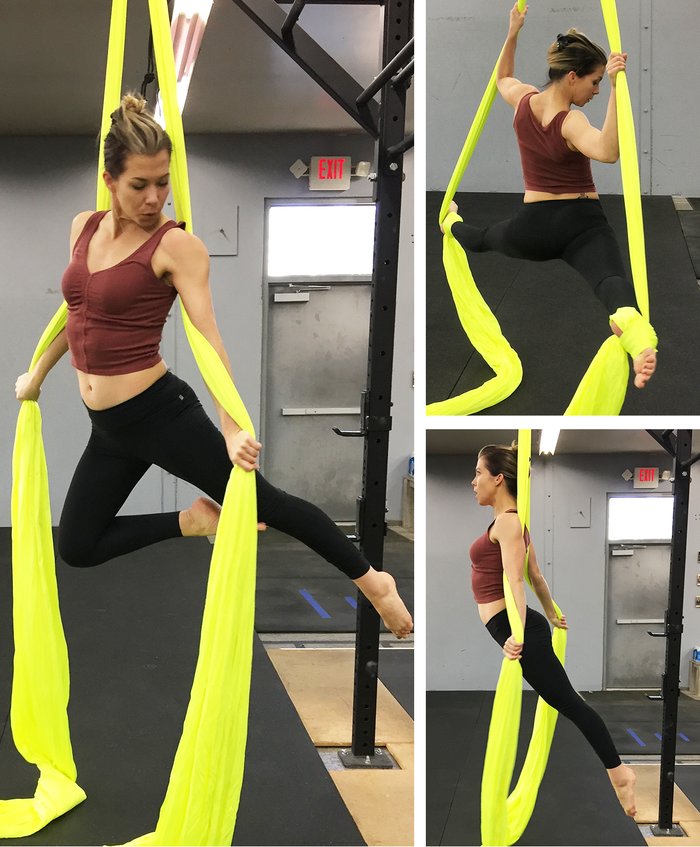
When you're a young trainer, you just don't get that because you don't feel that kind of pain yet. My own involvement with a true pain that could actually stop me from moving helped me to understand why other people felt the way they did, and why they couldn't move. I think that experience more than anything else is what really made me as a trainer.
I stopped pushing myself so hard after that. I started to research ways to have the strength and the body that I wanted, with as little work as possible—not because I'm lazy, but because the body is a machine, and it's put together with moving parts that can break. If you're overworking that machine and you're not taking care of it, it will fall apart. I don't feel I, or others, need to work out as hard as possible all the time. Instead, I think in terms of, "What's the minimum that I can do to keep this thing oiled and running optimally?"
You developed an empathy for injury, which, I agree is really missing from a lot of new trainers, people who get certified in two days and then promote themselves as fully educated when they have no knowledge of how injured bodies work or how a body ages, and they often have no knowledge of the human body in general. At their best, they're ineffective for non-athletes. At their worst, those trainers are essentially training people to sustain long-term injury.
I agree. I felt horrible once I realized how naïve and unsympathetic I'd been to people who did legitimately hurt, to people who did have injuries. Once you are in that much pain, then you know. I couldn't move, I couldn't sit, I couldn't stand. The best I could do was lie down on a very soft bed. Everything hurt. Getting into the car hurt. Driving hurt. Standing on my crutches hurt. That's a real problem, but it doesn't go away once you're "healed." To this day, I favor my other hip, so I'd be remiss to try to force others to power through what are very real limitations.
How did you get into competitive bodybuilding?
Well, my first love is training. I'm NSCA- and ACE-certified through UCLA. I also have my NASM certification and a spinning certification, and I got my CrossFit Level 1 certification three different times because I was addicted to CrossFit and wanted to refresh. I'm also certified in yoga trapeze. As a personal trainer here in Boise, I did my first year at Idaho Athletic Club and then I did four years at Gold's Gym. Since then, I've worked on my own as Heather Eastman Fitness, most recently out of A2O Fitness, The Fitness Company, and now Verdant CrossFit.

When I began to train, like a lot of trainers who work in big box gyms, I got approached about competing, so I went to a few shows to check it out. In my art history classes at UCLA, we had studied proportions in the work of Michelangelo, of Leonardo. That's how you learn to paint beautiful human figures. At these bodybuilding shows, I felt like I was looking at living statutes.
The bodies were beautiful. They were sculpted. But it was more than the sculpting that captured me. There was something so intentional, so purposeful. It felt like art. I was just enthralled. It appealed to me on a very visual level as something that I knew about before I even walked into that first competition.
Then, when someone said, "You could do this," I was like, "No, I can't." But, I did it anyway. I competed for two years. I did two NGA shows and two NPC shows.
If you look at pictures of me before 2007 and pictures of me after 2008, that year of lifting and training to step onstage for the first time, my body completely changed. It's never changed back. Even though I had already been a trainer, it took me training for a competition to really understand what lifting weights can do. I didn't have arms and shoulders before that. I didn't have a defined waist before that. I didn't have quads or hamstrings before that. I was a runner, but I was just skinny. I had a butt and that was it. After training to go onstage, I understood that, if you're willing to put in the time and willing to lift really heavy, you are sculpting with a higher intentionality. You're following in the artistic tradition.
The root of this industry is health consciousness, but because it's very body-centric as a natural extension of that, perceptions can get muddied. You wrote a great #MeToo-styled article for Bodybuilding.com about issues with sexual harassment that can arise between personal trainers, clients, fitness personalities, and the industry in general. It was a survey piece, not a personal one, but have you dealt with that on a personal level?
Gym culture is unique. You're half naked, sweaty, and talking about your body. The humor can naturally get raunchy and there's a lot of goodwill toward one another's progress, but lines can easily get blurred after the humor and goodwill fades.
Sometimes a client might say, "Your butt looks great," and I might say "Thank you!" because they meant it as a compliment, and I took it as one in the context of our conversation. Those same words spoken to me outside of the gym would be out of context and totally inappropriate. The social agreement in one space is different than the social agreement in another space.
So many women have had terrible experiences in the fitness industry due to people taking the social contract of gym life into venues outside of the gym. Or, of course, many people take liberties with another's body due to the close-quartered nature of our industry. Touching somebody briefly to assist their movement is different than touching them and not removing your hand.
Personally, I have only had one bad experience as a trainer, with a client who exhibited stalking behavior, and I had one bad experience with a contest judge soliciting me outside of the contest. Both of those instances crossed lines that shouldn't be crossed. But, I train a lot of men and there is usually a lot of respect for my authority in that space. They appreciate that I'm as strong as them and they also appreciate that I don't belittle them when they're in this vulnerable space of having come to me for help.
What's your job here at Bodybuilding.com?
My job title is Content Editor. I edit and write articles for the site, I script-supervise the video shoots we do with athletes, I write a lot of the training material for our BodyFit Elite programs, and I co-host our bi-weekly podcasts with Nick Collias, our Executive Editor. Lately, I've been writing the BodySpace Member of the Month articles, which is my new favorite thing to be working on because the articles are about real people who are excited that Bodybuilding.com cares about them and wants to feature them. I'm basically working at my dream job right now, spending every day being able to write about some of the things I care about the most.
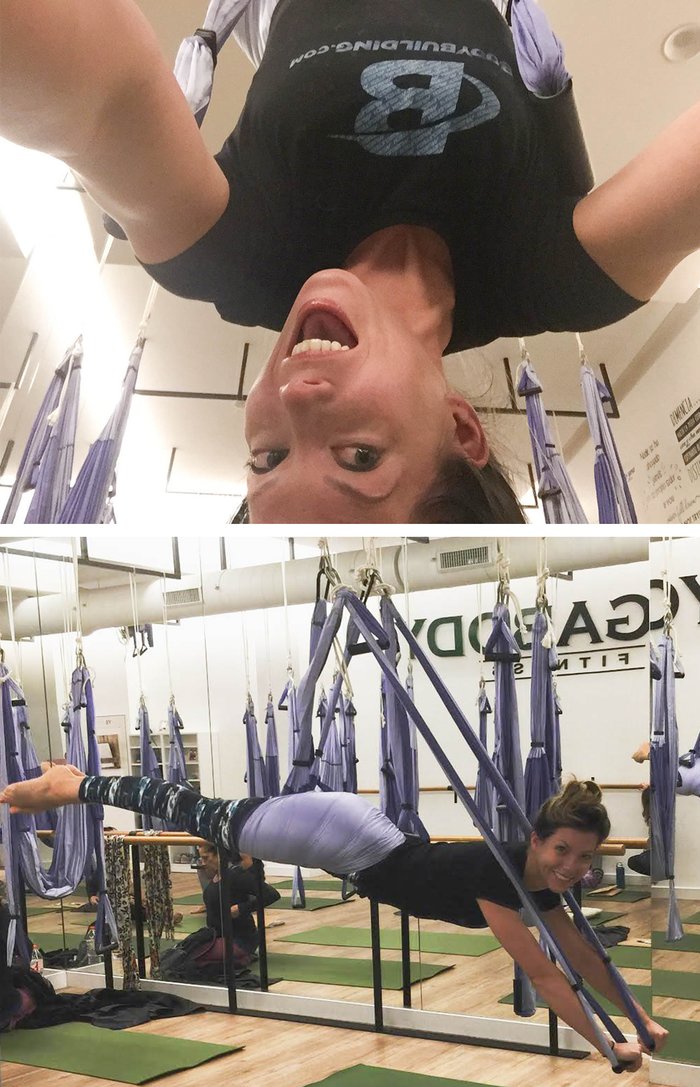
What are your co-workers like?
Everyone is fitness-minded. I don't get dirty looks for heating up broccoli in the microwave. And, almost everybody in the primary departments I work with is snarky, sassy, and funny. Everybody is very supportive, and it feels like a little family.
What's your favorite feature on the site?
Oh, for sure it's the motivational stories. I think that, if Bodybuilding.com had to define why it exists, I don't think we would say it's for the athletes that are already experienced bodybuilders. I think we exist for the people who want to become bodybuilders. It's great that we have big, beautiful, muscular people on our website, but underneath the body is the soul. To me, what we're all about are those stories about the guy who came to us because he needed to change his life. That's why I wanted to write for Bodybuilding.com to begin with. Interviewing top athletes is just a perk.
How has your own training evolved over time?
Rather than training for aesthetics, I now train for performance. I'm doing handstands and pull-ups, because it's about functionality for me right now.
One year I might think to myself, "I want to be able to jump really high," so I'll spend that year training to get vertical. My training is always based on what I want to be able to do rather than what I want to look like. The aesthetics just naturally follow. To me, that's way more fun!
Weekly, I train however I feel like training on a particular day. I don't really like just lifting weights anymore, and I prefer to stay lean by eating healthy. So, I usually do something random like head down to the Bodybuilding.com gym in the middle of the day to practice handstands or test out a program for an article. One thing I try to do consistently is the yoga trapeze, because it is so good for my back. On Saturdays and Sundays, I hike, climb, or do aerial silks. Here's what a week might look like:
- Monday: Handstand practice, 30 min. of yoga trapeze, 30-min. walk
- Tuesday: Handstand practice, maybe lift something heavy or do a few push-ups, 60-min. walk
- Wednesday: Handstand practice, 30 min. of yoga trapeze
- Thursday: Handstand practice, maybe lift something heavy or do a few push-ups, 60-min.walk
- Friday: Handstand practice
- Saturday: Handstand practice, definitely lift something heavy, go for a hike
- Sunday: Aerial silks or yoga trapeze
What's your diet like?
I'm a six-days-a-week vegan. On the seventh day, I eat whatever I want. I feel a little bit better and sleep a little bit better knowing that I'm not eating nearly as much meat as I was before, or nearly as much dairy.
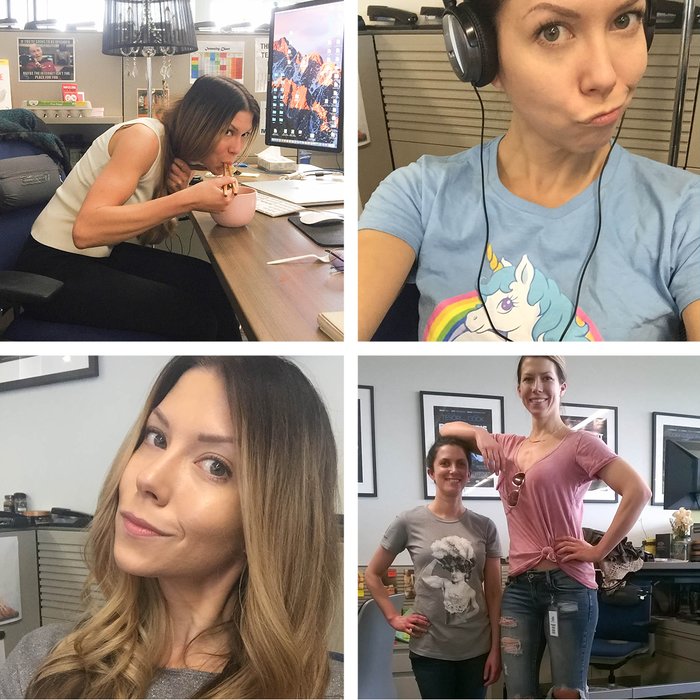
Here's what a typical week might look like:
- Meal 1 (around 10 a.m. because I try to fast for 12-14 hours): 2 scoops MRM Elite Veggie protein powder mixed with water
- Meal 2 (noon): Avocado "toast" (either rice cakes or sweet potato toast)
- Meal 3 (2 p.m.): 1 large salad with vegan dressing plus 1 cup of rice, lentils, or black beans with 1/2 block of tofu
- Meal 4 (4 p.m.): Carrots or broccoli dipped in hummus, or apple with a handful of walnuts, plus 1 scoop MRM Elite Veggie Protein Powder mixed with water
- Meal 5 (7 p.m.): 1 large salad with vegan dressing
- Meal 6 (8 p.m.): 1 glass red wine with apple or grapes
